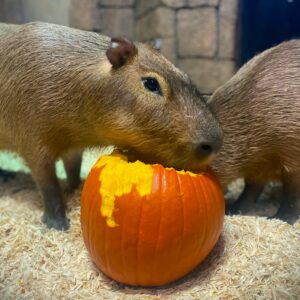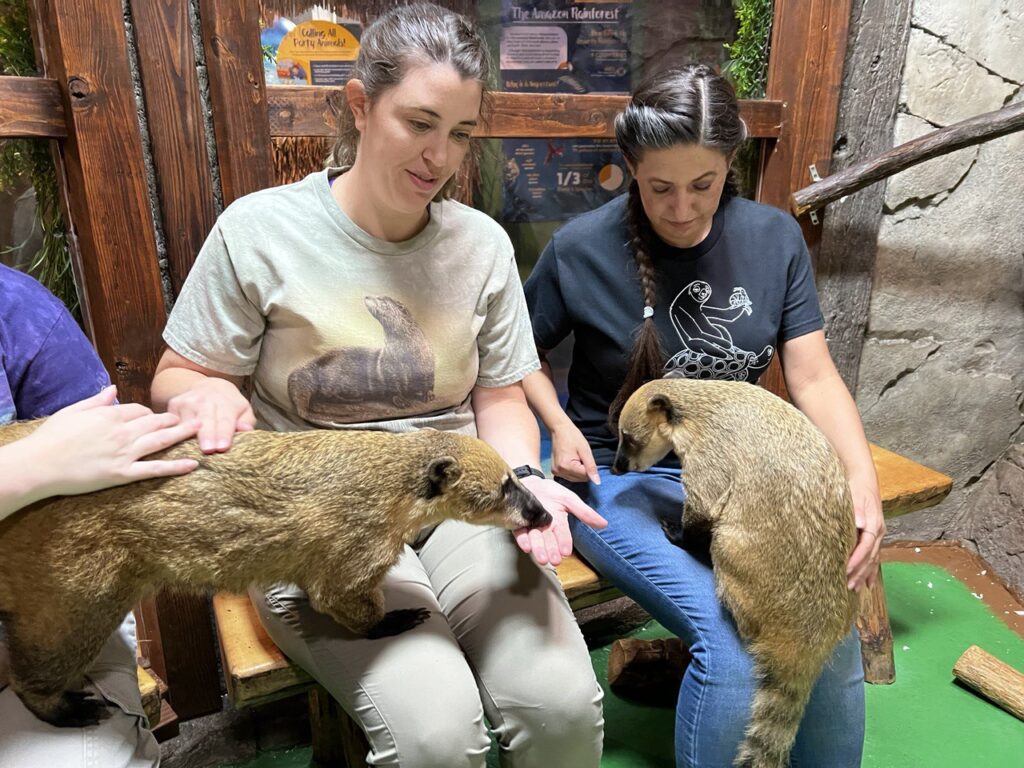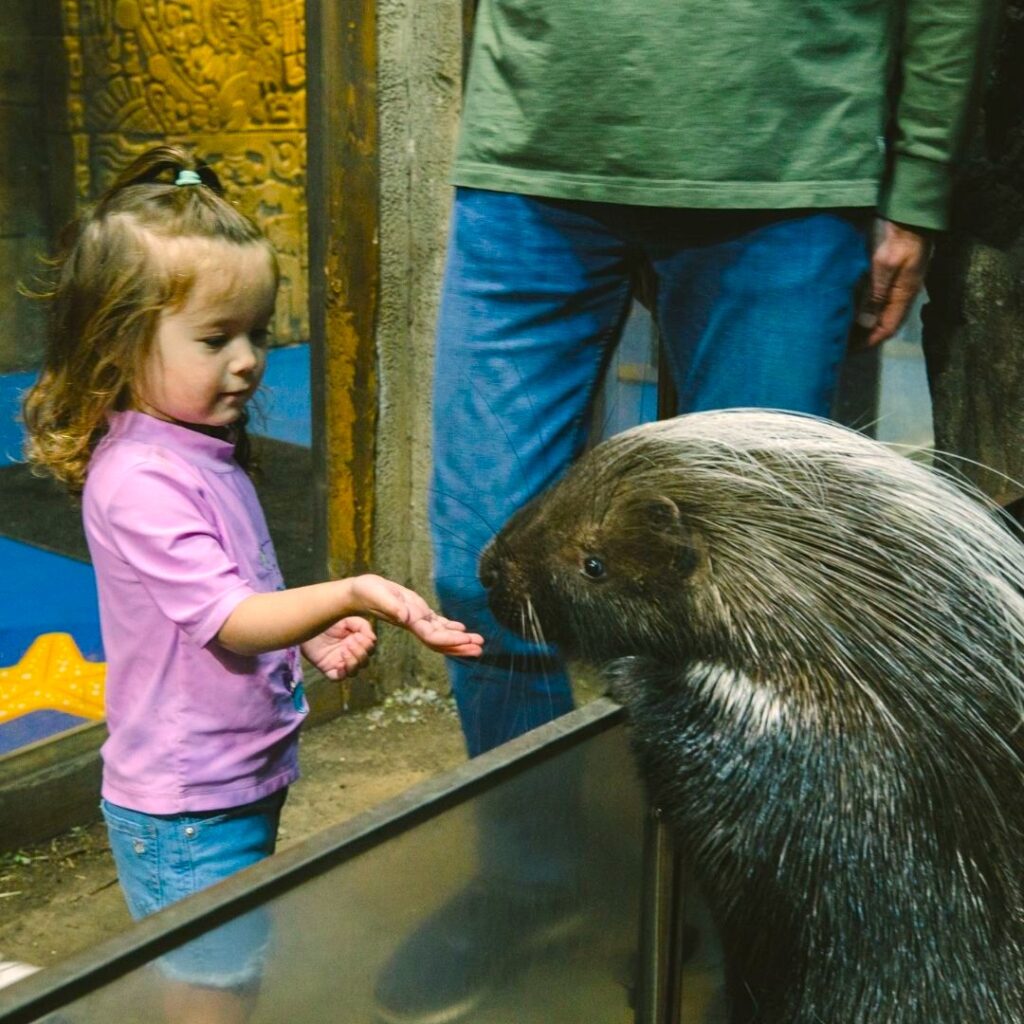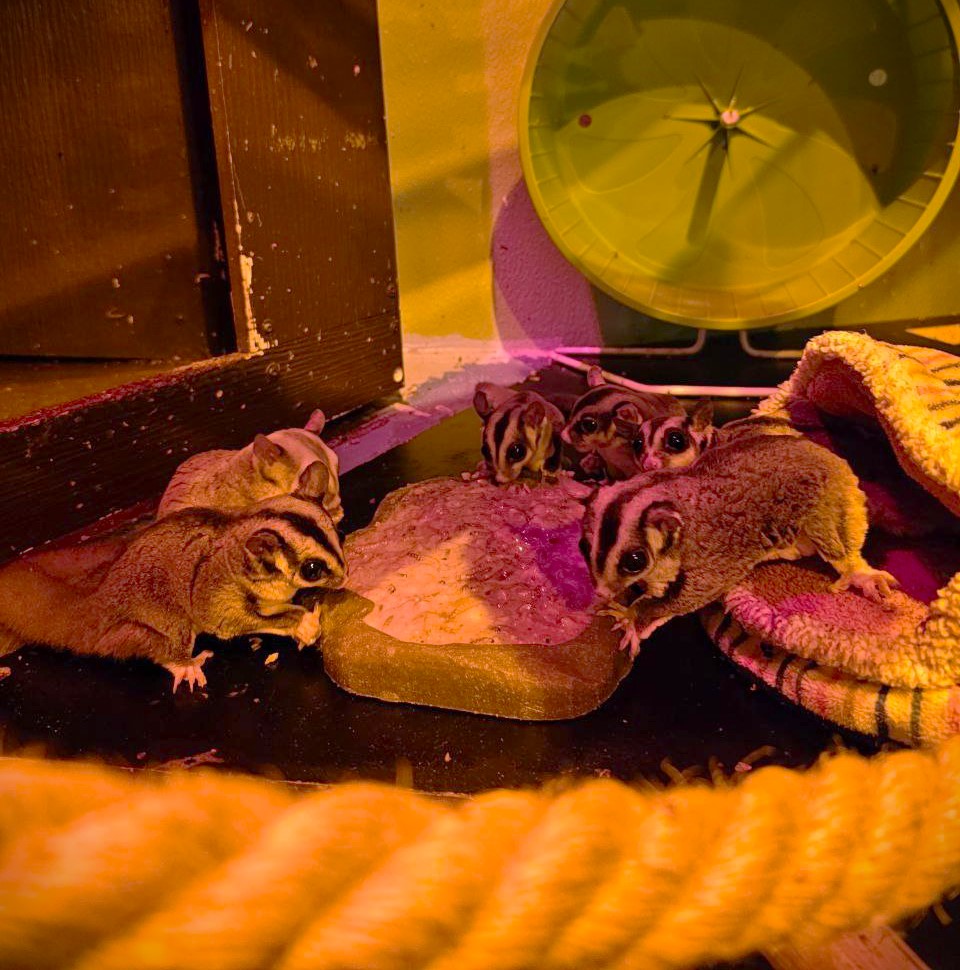SeaQuest Guide to Capybaras
Share it on:

You’ve seen the videos on social media and are probably wondering ‘what is that!?’ They’ve become one of the biggest internet sensations in recent years. That’s right we’re talking about Capybaras! Because of their recent popularity and trending status on platforms such as TikTok, people around the world have taken an interest in the ‘Capy’, a native animal of Central and South America. A Capybara is basically a large rodent. In fact, it is the largest rodent in the world! And SeaQuest is home to some of these adorable and curious creatures. Here’s a quick guide to capybaras and where you can see one in real life!
What is a Capybara?
Under the scientific name Hydrochoerus hydrochaeris the capybara is a large, semi-aquatic rodent that inhabits the water-logged regions of Central and South America. Closely related to other rodents such as chinchillas and guinea pigs, the capybara is the largest rodent in the world. They weigh anywhere between 60 to 174 lbs or 27 to 79 kilograms. Females are usually a little larger than males. Capybaras grow to about 3 to 4 and ½ feet in length and about 20 inches tall from foot to shoulder.
These adorable mammals are easily recognizable due to their particular body shape and unique coloration. They have a dense, barrel-shaped body with a short head and reddish-brown fur on top, while the fur on the underside usually runs yellowish-brown.
Despite their enormous size, capybaras are animals that have adapted well to life in the water and have a number of distinctive characteristics that aid their amphibious lifestyle, most notably their webbed feet. Capybaras give birth to a litter of one to seven pups at a time, with the average being three, following a 120-day pregnancy.
Fun Capybara Facts:
- Capybaras can sleep in the water! They keep their nose just above the waterline to breathe while they slumber.
- They are crepuscular animals, which means that they are most active during dawn or dusk.
- The name capybara comes from the name “Kapiyva” in the indigenous language of the Guarani, which translates to “Master of the Grasses”
- Like all rodents, capybaras have two large front teeth that never stop growing. These teeth can grow over three inches and are relatively sharp to cut through both vegetation and bark. In order to keep their teeth to a reasonable length, capybaras wear them down by grinding and chewing on food or bark
- They can run up to 22 mph, about the average speed of a domesticated dog.
Check Out one of our Capy’s on YouTube!
Are Capybaras Friendly?
The capybara is also known for its highly friendly behavior. They’ve been spotted hanging out with creatures of all kinds – not just other capybaras. Some of their other friends include turtles, ducks, fawns, monkeys, and other random birds. In fact, birds have been known to sit perched on top of the capybara and rest for hours on end.
These highly social creatures live in large groups of 10-30. In some situations, they can even form herds of up to 100 capybaras. They are chatty little animals who squeak, chirp, and bark around their herd or their family.
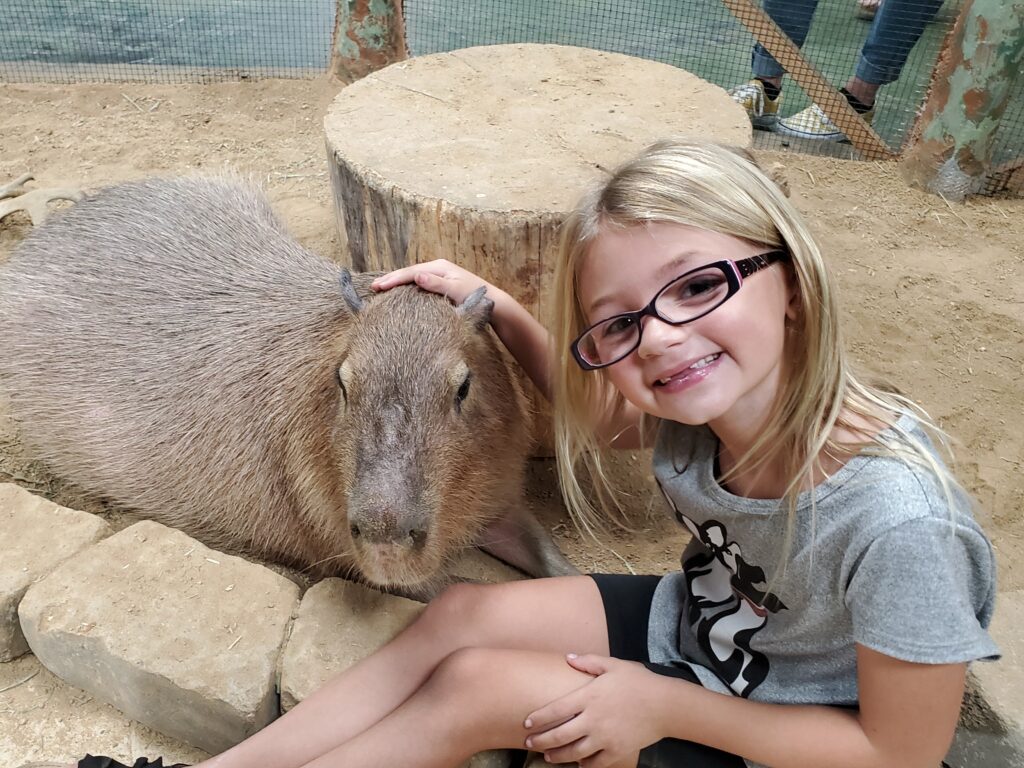
Where Do Capybaras Live?
Commonly found in South America, Capybaras can be found in Panama, Colombia, Brazil, Argentina, Venezuela, Peru, French Guiana, Paraguay, and Uruguay. Basically, they predominantly reside in the Amazon rainforest regions of the continent. They live in the dense tree-lined areas that run alongside bodies of water including lakes, streams, rivers, ponds, swamps, and marshes.
Capybaras love spending the majority of their time in the water rather than on land. They are excellent swimmers due to having big webbed toes and the ability to hold their breath underwater for up to five minutes. If a predator is nearby or tries to attack, they’ll dive into the water and swim out of danger. During hotter days, they’ll frequently take dips in the water to keep cool.
What Do Capybaras Eat?
Overall, the capybara is an herbivorous animal, meaning it eats primarily plants. But interestingly enough, their favorite snack food is grass, which has earned them the rare name of a graminivore. In the wild, 80% of their daily diet is different types of grass and water plants. They also love to eat grains, melons, and squashes.
Did You Know?
The average capybara eats between six and eight pounds of fresh grass a day!
Are Capybaras Endangered?
Though listed as “Least Concern” on the International Union for Conservation of Nature (IUCN) List, capybaras have some pretty aggressive predators in the wild. Their natural predators are jaguars, caimans, and anacondas. Ocelots and harpy eagles can also hunt their young. Their main threat, however, is humans — they are hunted extensively for their meat and their hide, which can be made into leather.
SeaQuest is committed to protecting our world’s oceans, wildlife, and endangered animals. We focus on how to be proactive in finding solutions. If you’d like to learn more about Capybaras and how to snap a selfie with one, check out SeaQuest today! You can meet Alvin, Westley, Dandelion, or Oliver! They love visits from people and will munch on any fruit snacks you may want to give them. Stop by any of the following locations today: Roseville, Lynchburg, Sacramento, and Ft. Worth

